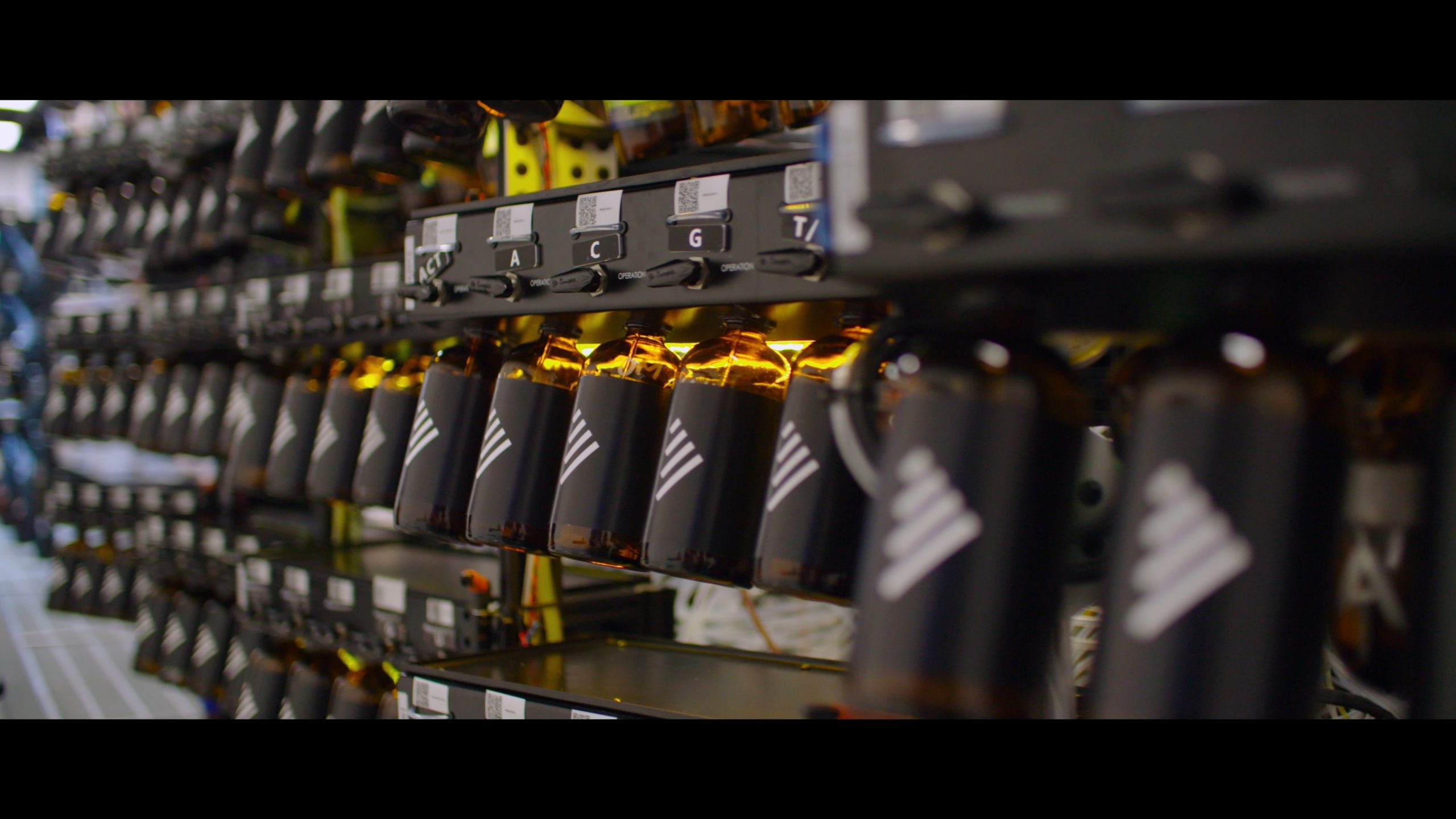
Bottles of individual RNA nucleic acids at Synthego, a company providing key components of CRISPR. Scientists around the world use CRISPR to study a huge variety of issues—from curing disease to the genetic rescue of species.
CRISPR/Cas9 has given scientists unprecedented control over the basic building blocks of life. It opens the door to curing diseases, reshaping the biosphere, and designing our own children.
Now, a new documentary, titled Human Nature offers a provocative exploration of CRISPR’s far-reaching implications. The story is eagerly told by the scientists who discovered it, the families it affects, the doctors eager to use it, and the bioengineers who are testing its limits.
How will this new power change our relationship with nature? What will it mean for evolution? To begin to answer these questions the film looks far back into the past, then peers into an uncertain future. We learn that CRISPR/Cas9 is not only a recent revolution in biotech. That is also an ingenious immune system that bacteria evolved over billions of years to fight viruses.
Now, the film itself is adapting to the COVID-19 virus. The producers of the film, having to cancel screenings due to the COVID-19 shutdowns, have released the movie online. It’s available online, to watch on-demand.
Our executive director, Ryan Phelan is one featured voice in the film. That’s because, at Revive & Restore, we’re especially interested in how CRISPR/Cas9 makes genetic rescue possible. The de-extinction of the Woolly Mammoth, the Heath Hen and Passenger Pigeon, and facilitated adaptation for the endangered Black-footed Ferret, all rely on CRISPR/Cas9 and its unparalleled ability to modify genomes precisely—inserting beneficial characteristics, for instance, right where they’re needed. Without CRISPR, much of our mission would be out of reach.
While the COVID-19 shutdowns continue, there really is no better time to watch Human Nature. For parents hungry to provide their children with engaging educational material or anyone interested in the marvels of the natural world and the future of DNA will find the story that unfolds to be remarkable.
In the interim, here are some of our favorite quotes from the film:
ORIGINS
“Nature is one of the greatest inventors of all time. What we can do is a very, very, insignificant fraction of what nature has already done. Nature invented CRISPR.” —Stephen Hsu, Genomic Prediction
“How old is CRISPR? “Oh in terms of millions of years? Ah! Probably billions.” —Jill Banfield, Professor in Earth and Planetary Science and Environmental Science, Policy, and Management, at UC Berkeley
REVOLUTIONARY
“Turning science fiction into science fact is not mad. It can actually be quite useful.”—George Church, Professor of Genetics at Harvard Medical School, lead scientist for the Woolly Mammoth Revival.
“I was thinking about all the cool experiments you could do with this tool. I wasn’t thinking about ‘oh my goodness, this is a tool that allows us to change our relationship with nature.’” —Jennifer Doudna, Professor of Biochemistry, Biophysics and Structural Biology at UC Berkeley
HOW IT WORKS
“Cas9 cuts DNA based on an instruction that it carries, and that instruction is a molecule of RNA, that matches perfectly with the DNA of the invader.” —Fyodor Urnov, Professor in Molecular & Cell Biology, formerly of Sangamo Therapeutics
“I can cut any DNA I want, just by changing this little piece of RNA.” —Jennifer Doudna, Biochemist at UC Berkeley
CONSERVATION
“In the mammoth project, we read that ancient DNA. Decide which genes we’re going to resurrect. Put those in the Asian elephant cells. Then we’re developing technology—that’s not yet working—to take those embryos all the way to term. Then we scale that up to make a herd of these things, maybe 80,000 of them, to repopulate the tundra.” —George Church Geneticist, Harvard Medical School
“I often try to avoid talking about Jurassic park, but I’ll give you this: Jurassic Park was about hubris. It’s just the opposite of what scientists like George Church and others we work with are thinking about.” —Ryan Phelan, Revive & Restore
“In order to even fathom bringing back an extinct species, there’s no end of engineering that has to happen. And it is all novel, important new science and it can be used to protect any species—endangered as well as extinct.” —Ryan Phelan, Revive & Restore
“Once you realize the magnitude of humans’ impact on the environment, it’s hard for me to say that we can’t try to correct it.”—Ryan Phelan, Revive & Restore



